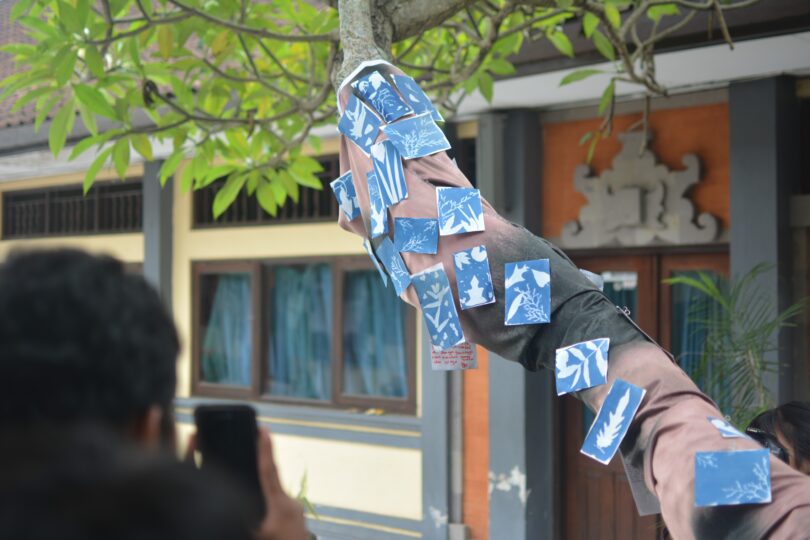- Posted on March 2nd, 2019
CCL in Action: Budi Agung Kuswara, Ketemu Projects: Kekasih Hati Sang Bumi

Budi Agung Kuswara’s world is intimately connected to the rhythms of nature. “I can feel the changes of the environment from the temperature, from the air, from the environment. I come from the fishermen community, and we use old technology like viewing the stars and counting the moon cycle – and I experience this is no longer accurate: changes are happening. And because of that I ask why.”
Through CCL, Budi found it deeply inspiring to join a global community of people who recognise that climate and environmental changes are happening and who were looking for ways to speak and think about them. He describes how ‘in Bali itself this kind of discussion is very rarely happening’, and he wanted to find a way of making climate change relevant to his local community, particularly the younger generation. Budi designed a CCL in Action local development grant project around a ceremony known as Tumpek Uduh. On this day, which happens every six months, it is tradition for Balinese people to show their gratitude towards the trees and natural vegetation. In order to renew a connection with trees, people will make offerings to the trees and spend time talking with them. This celebration is seen as a reminder that as humans we must express gratitude for the world that supports our lives, thereby establishing a positive relationship with nature. Budi’s project, called Kekasih Hati Sang Bumi, or ‘The Sweethearts of the Earth’, was a creative intervention that occurred on the day of Tumpek Uduh. The intervention required people to work with an artist to “clothe” a tree that they are making a connection to and to document the action for social media. There were prizes handed out to people who had the best caption, the best photo, and the most likes. Budi chose Tumpek Uduh as a time and idea that could connect different generations in Bali, linking tradition to contemporary action and issues.
Budi worked with one formal school and another informal community-based school. Alongside teachers and members of the public, they had 45 high school students and 35 middle school students participating in the ritual. To cover the tree, Budi taught students about cyanotype. This technique is a photographic printing process which produces a cyan-blue print. First, Budi asked the students to look for dried leaves, branches or flowers. Then they had to arrange the objects on a special paper that has been sensitized by the cyanotype chemicals. Next, they had to put the paper with the objects arranged on a special tray which had some glass covering it. This was left to expose in the sunlight. Finally, the students removed the objects and developed the paper in water. The print is hung to be air dried, and eventually attached to the tree. Once the tree was covered, students had the opportunity to photograph and write about their experience on social media. Through putting out the ritual on social media, where it reached over 1,000 people, Budi hopes that ‘more people outside the culture of Bali will get to understand the practices here . . . We also hope that more youths in Bali can continue this practice independently’. Budi believes that if cultural leaders can help people establish bonds with their environments, people will begin to see environmental issues as a personal challenge and responsibility.
Budi received expert mentorship from Ashleigh Morris, CEO of Coreo, an Australian circular economy expert, to explore opportunities for Ketemu Projects to catalyse creative circular economy projects in Indonesia. Some of this expertise will be integrated into Ketemu Projects’ upcoming collaboration with The Arts Development Company UK, Gerakan Kreabilitas, a project to create creative employment opportunities for people with disabilities, supported through a British Council Developing Inclusive Economy Programme

Image: Artwork at SMKN 1 Mas Ubud, Pejeng

